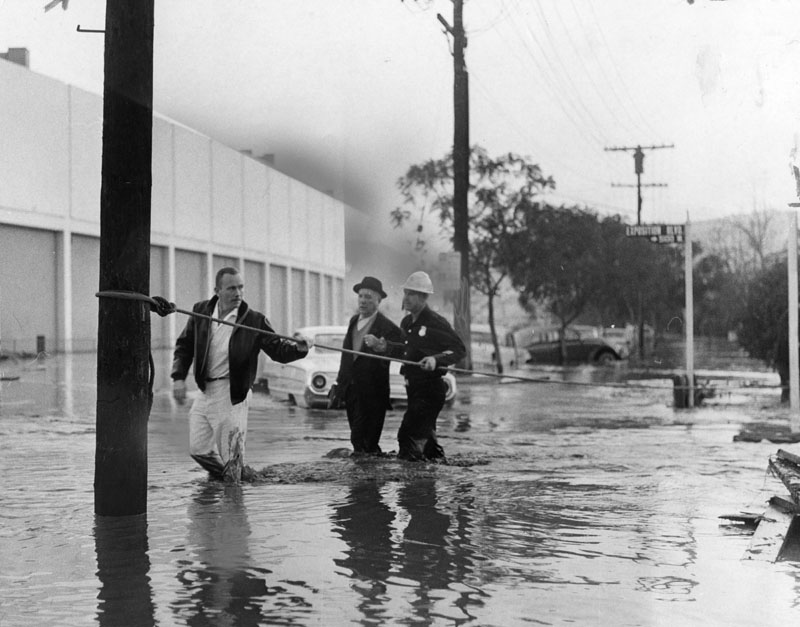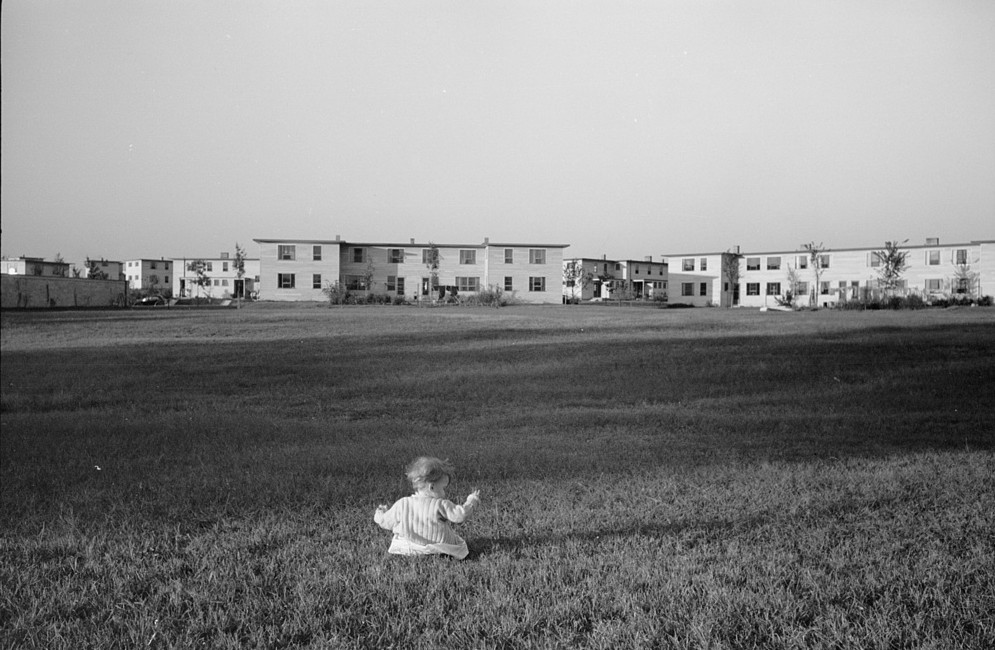*Note: Some of the language below may be a little antiquated because its excerpts and transcriptions from a the book -Transcription from Historic Houses of New Jersey By Weymer Jay Mills .J. B. Lippincott Company – written in 1902 = The original words provide a unique glimpse of the people and early times in New Jersey.
Four and a half miles distant from Princeton, New Jersey standing upon an elevated point near the banks of the Millstone, is the old Berrian residence, better known throughout New Jersey as the Rocky Hill House. Here General Washington wrote his farewell address to the Army.
Rockingham at it’s original location
Rockingham is believed to be the second oldest house in the Millstone River valley, its original construction dating between 1702 and 1710. Jedidiah Higgins, one of the earliest settlers in the Rocky Hill-Kingston area, is credited with building the house.
New Jersey Supreme Court Justice John Berrien purchased the property in the 1730s. It was during his ownership that Rockingham reached its full potential as a “fine and healthy farm.” In 1764, Berrien enlarged the house, added a kitchen wing (no longer extant) and embellished the interior of the house with architectural woodwork. Upon his death in 1772, the property passed to his wife, Margaret.
In 1783, Rockingham became significant as General George Washington’s final military headquarters. Mrs. Berrien had put the property up for sale, but when presented with the opportunity to rent to General Washington, she accepted.
Mrs. Berrien sold the house to Frederick Cruser in 1802. The Crusers remained in the house until 1841, during which time the house underwent renovations, including the addition of a front porch.
Nathaniel R. Ewan, Photographer July 8, 1936 West and South Elevations- Judge John Berrien House, Rocky Hill Road, Rocky Hill, Somerset County, NJ
The house was owned in the eighteenth century by John Berrian, an associate justice of the Supreme Court of New Jersey, and was occupied by himself and family from the year 1734 up to the time of his death in 1761. After that date his widow and children still continued to reside there, but on the convening of Congress at Princeton she gladly rented it to that body as a home for General Washington and his lady, then at Newburghon-the-Hudson.
Nathaniel R. Ewan, Photographer July 8, 1936 East Elevation- Judge John Berrien House, Rocky Hill Road, Rocky Hill, Somerset County, NJ
From General Washington’s arrival at Rocky Hill, on August 24 of the memorable year of 1783, until his departure in the following November, the Rocky Hill House was truly an abode of happiness.
The war was over, the colonies were free and independent States, and Washington and the other great men of the new country were drawing their first breaths of relief while awaiting the arrival of the Treaty of Peace and receiving the ambassadors of congratulation from Europe.) The army was virtually disbanded. Encamped about head-quarters, we are told, there was but the slim number of three hundred soldier boys from Maine, all under twenty years of age.
Nathaniel R. Ewan, Photographer July 8, 1936 interior dining room fireplace detail- Judge John Berrien House, Rocky Hill Road, Rocky Hill, Somerset County, NJ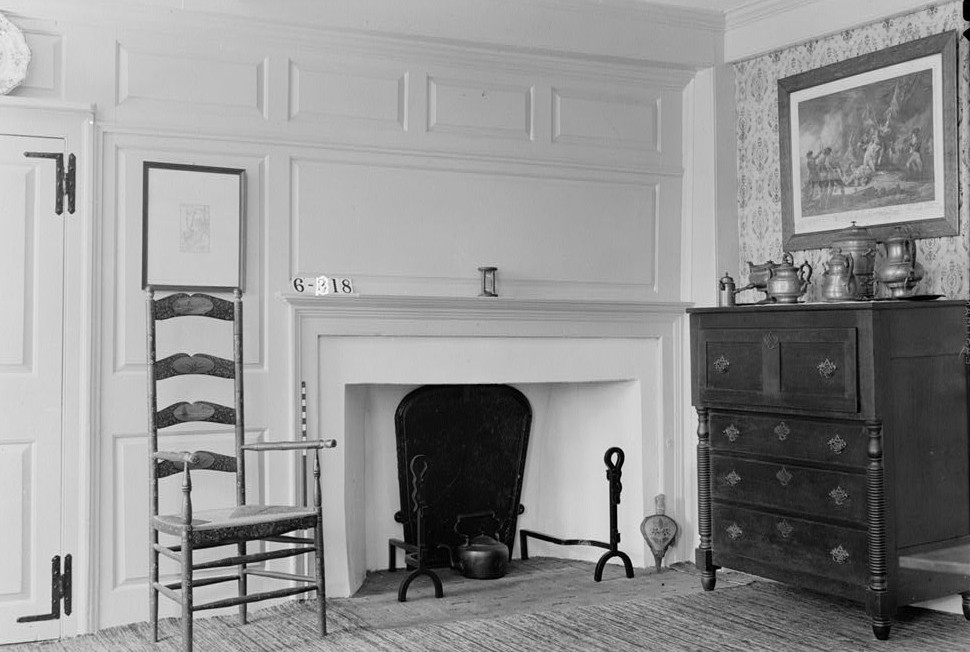
Jolly boys they were, with their songs and merrymaking. They were no doubt glad at the thought of a speedy return to their rock-bound coast and the pursuit of peaceful avocations, for on the weatherboards of the old house they have left us many crude sketches of little fishing-boats, showing that their minds were yearning for home.
Over the rocky road which leads to Rocky Hill many famous people journeyed to visit the hero Washington. Francis Hopkinson, in his “Consolation of the Old Bachelor,” has given us a quaint description of that road’s perils. Writing of the hen-pecked husband, he makes him say:
“After a dish of tea and good bed at Princeton, in the morning we set off again in tolerable good humor, and proceeded happily as far as Rocky Hill. Here my wife’s fears and terror returned with great force. I drove as carefully as possible: but coming to a place where one of the wheels must unavoidably go over the point of a small rock, my wife, in a great fright, seized hold of one of the reins, which happening to be the wrong one, she pulled the horse so as to force the wheel higher up the rock than it would otherwise have gone, and overset the chair. We were all tumbled hickledy-pickledy into the road—Miss Jenny’s face all bloody—the woods echo to her cries—my wife in a fainting fit—and I in great misery.”
Nathaniel R. Ewan, Photographer July 8, 1936 interior living room fireplace detail- Judge John Berrien House, Rocky Hill Road, Rocky Hill, Somerset County, NJ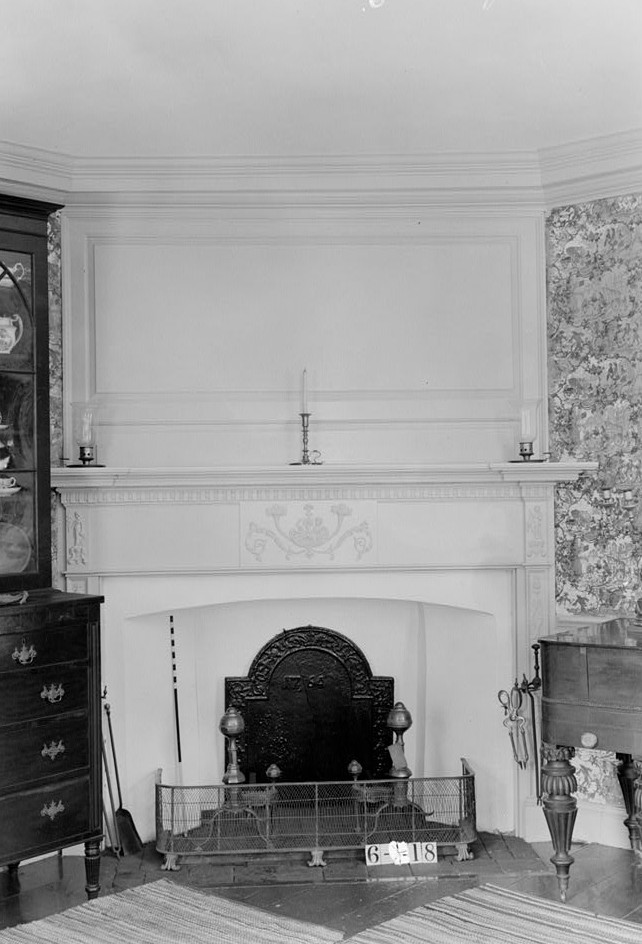
It is to be hoped that none of Washington’s friends endured any such hardships. There was one at least who would have been willing, and that was Thomas Paine, the man who rendered so many services to America,—services poorly remunerated.
We see Washington watching for him on the balcony of the Berrian house as he comes up the road, a picturesque figure on his horse ” Button.” His hair is rolled in the French fashion, his face is smooth and ruddy, and his eyes sparkle with the brilliant fire of genius. How kindly those eyes must have gazed on his benefactor as they often sat together, talking over Paine’s private affairs or discussing the future of the new country.
Those were truly red-letter days for poor Paine, as he basked in the smiles of the great Washington. Many of General Washington’s old Revolutionary comrades came to the house, too. Humphreys, Cobb, Lincoln, and a round of the best company constantly filled its little rooms.
Nathaniel R. Ewan, Photographer July 8, 1936 interior rcorner cupboard in store room- Judge John Berrien House, Rocky Hill Road, Rocky Hill, Somerset County, NJ
The dining-room, in the southeast corner of the first floor, often failed to accommodate the large number of guests the general and his lady were in the habit of asking to partake with them, and tables were then set on the lawn.
David Howell of Rhode Island has given us a glimpse of one of these festive meals in a letter to Governor Greene. He says:
“The President, with all the present members, chaplains, and great officers of Congress, had the honor of dining at the General’s table last Friday. The tables were spread under a marquise or tent taken from the British. The repast was elegant, but the General’s company crowned the whole. As I had the good fortune to be seated facing the General, I had the pleasure of hearing all his conversation.
The President of Congress was seated on his right, and the Minister of France on his left. I observed with much pleasure that the General’s front was uncommonly open and pleasant; the contracted pensive phiz betokening deep thought and much care, which I noticed at Prospect Hill in 1755, is done away, and a pleasant smile and sparkling vivacity of wit and humor succeeds.
Nathaniel R. Ewan, Photographer July 8, 1936 interior -bedroom fireplace- Judge John Berrien House, Rocky Hill Road, Rocky Hill, Somerset County, NJ
On the President observing that in the present situation of affairs he believed that Mr. Morris had his hands full, the General replied at the same instant, ‘He wished he had his pockets full, too.’ On Mr. Peters observing that the man who made these cups (for we drank wine out of silver cups) was turned a Quaker preacher, the General replied that he wished he had turned a Quaker preacher before he made the cups.”
This was the Washington peace had made. The stern war-time commander was put aside, and the man who had been rarely known to smile through the long and arduous campaigns was almost like a child in his ebullient merriment. William Dunlap, the art historian, in the story of his own life, relates another anecdote of the happy Washington.
A short distance from the Berrian house was the “rustic villa” of Mr. John Van Horne, a gentleman farmer of some fortune, and quite prominent in that section of the country. General Washington was a frequent guest at his home and often stopped there for a chat with the Van Home ladies when riding too and fro from the Rocky Hill House and the town of Princeton.
Young Dunlap when at Rocky Hill became a guest of the Van Hornes, who were noted for their hospitality. Mr. Van Horne at that time is said to have been about twice the width of Washington, and as he then weighed no less than two hundred and ten pounds, the good Dutch farmer was, in the language of Fielding, “a prodigious sight to behold.”
One day when returning from a fall-time walk with his guests he found his black boys in the vain pursuit of a pig needed for the larder. Angry at their ill success, he started in chase of the squealing porker himself, and after violent exertions succeeded in catching it. With the pig under his arm, he became engrossed in a lecture to his servants, and failed to note that the immortal Washington and some of his aids had entered the front yard. Looking up and seeing the smiling face of Washington above him, his chagrin is said to have been so comical that the general indulged in the loudest paroxysms of laughter of any of the convulsed onlookers.
Much could be written about the onetime inmates of the old Rocky Hill House. On one of the walls hangs a copy of Joseph Wright’s painting of General Washington.
Joseph Wright was an inmate of the headquarters for some time, having brought a letter of introduction to Washington from Dr. Franklin, at whose advice he came from Paris. Other painters came to Rocky Hill to preserve the likeness of the “triumphant hero.” Among them were James Peale and our own William Dunlap. The latter first painted the ” mahogany visaged” Mr. Van Horne and his wife, and Washington greatly admired the portraits.
“It was Washington’s custom to ride to Princeton, mounted on a small roan horse. The saddle was “old and crooked, with a short deep blue saddle cloth flowered, with buff cloth at the edge, buckskin seat, the cloth most below the skirt of the saddle at the side, double skirts, crupper, surcingle, and breast straps, double belted steel bridle and plated stirrup.”
In the southeast room of the second story General Washington wrote his famous farewell address to the army. It was first spoken by the chief to his soldier boys from the quaint little second-story balcony. There were few dry eyes among the men who heard it, for it meant to them laurel leaves and rest and the long wished-for kisses of dear ones in distant States.
Nathaniel R. Ewan, Photographer July 8, 1936 interior -farewell address room – fireplace and panel details – Judge John Berrien House, Rocky Hill Road, Rocky Hill, Somerset County, NJ 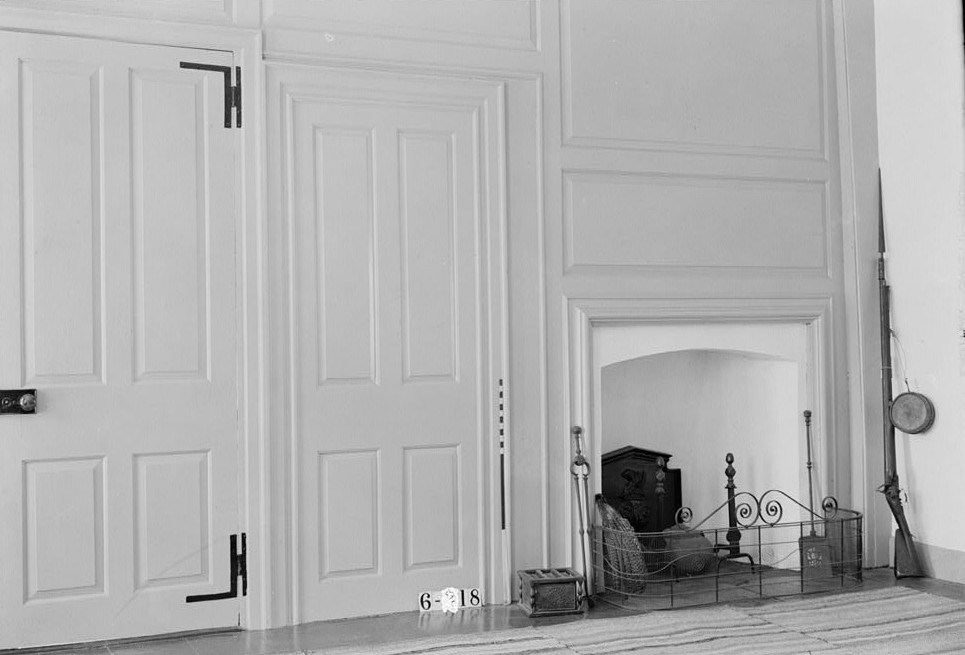
Of all that is known of General Washington at Rocky Hill— in his talks with Thomas Paine, surrounded by the Congressmen, chatting with the ladies of the first quality in the country, hearing the reading of the Treaty of Peace at Nassau Hall in Princeton, giving his farewell address to the army, and bidding General Howe pack his things for the journey to beloved Mount Vernon—there is nothing that can equal William Dunlap’s striking and poetic description of him, written many years after the great chieftain was sleeping:
‘* Before I left Princeton for Rocky Hill, I saw for the first time the man of whom all men spoke—whom all wished to see. It was accidental. It was a picture. No painter could have grouped a company of military horsemen better, or selected a background better suited for effect.
“As I walked on the road leading from Princeton to Trenton, alone, for I ever loved solitary rambles, ascending a hill suddenly appeared a brilliant group of cavaliers, mounting and gaining the summit in my front. The clear autumnal sky behind them equally relieved the dark uniform, the buff facings, and glittering military appendages.
“All were gallantly mounted. All were tall and graceful, but one towered above the rest, and I doubted not an instant that I saw the beloved hero. I lifted my hat as I saw that his eye was turned to me, and instantly every hat was raised and every eye fixed on me.
“They passed on, and I turned and gazed as at a passing vision. I had seen him. All through my life used to the ‘pride, pomp, and circumstance of glorious war,’—to the gay and gallant Englishman, the tarlan’d Scot, and the embroidered German of every military grade: I still think that old blue and buff of Washington and his aids, their cocked hats worn sidelong, with the union cockade, the whole equipment as seen at that moment was the most martial of anything I ever saw.”
The Rocky Hill House is now owned (1902) by “The Washington Head-quarters Association of Rocky Hill,” consisting of many of the most prominent men and *” women of New Jersey. Its rooms have been furnished by different Revolutionary societies, and it is a loving memorial of the happiest Washington of history— Washington the conqueror.
The Rocky Hill House today is called Rockingham and is located in Kingston, New Jersey. The property changed hands several times, and by the middle of the 1890s the Rocky Hill Quarry Company owned Rockingham and used it as quarters for quarry workers.
In 1896, two local residents organized the Washington Headquarters Association. The Association, which purchased the house from the quarry for $1200, and the adjoining land for $1, moved the house farther away from the quarry to protect it. The Association’s goal was to restore the house and furnish it with donated items that may have belonged to the Washington or Berrien.
The State of New Jersey acquired the property in 1935 and in 1956, moved the house even further from the advancing quarry. On July 20, 2001, the house was moved a third time to its current location.
Rockingham’s primary period of significance is 1783 – 1802, spanning the era from George Washington’s residency at the end of the Revolutionary War to the acquisition of the property by the Cruser family in 1802.
This period exemplifies both the early years of the new nation as well as the general social, economic and cultural revolutions of Central New Jersey’s Millstone River valley. It takes into account the most important surviving elements of the main farmhouse, addresses the process of change over time, and allows for the most flexible use of the current site.
SOURCES
- Transcription from Historic Houses of New Jersey By Weymer Jay Mills .J. B. Lippincott Company – written in 1902
- Library of Congress
- http://rockingham.net/
- National Parks and Services
The Grand Masters of Free & Accepted Masons of the State of Alabama 1811-2011
VINEGAR OF THE FOUR THIEVES: Recipes & curious tips from the past

